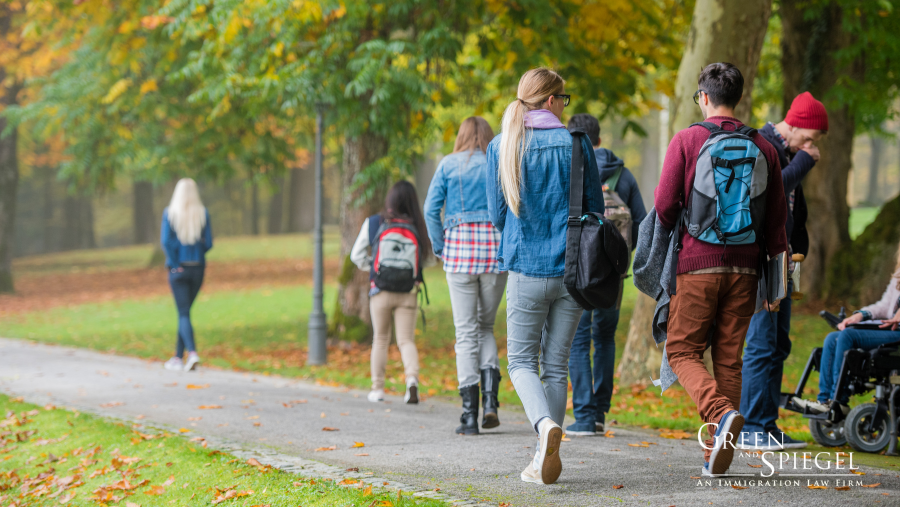Whether you are moving across the city, across the country or around the world, nothing says true love more than packing up your life and moving to Canada to start a life with the person you love.
Family reunification continues to be a top priority for the department of Immigration, Refugees and Citizenship. This priority is codified in section 3(d) of the Immigration and Refugee Protection Act, which states that one of the primary objectives of the Act is to see that “families are reunited in Canada.”
Who do you love?
In Canada, same-sex as well as opposite-sex partners and spouses are eligible to apply.
A spouse is someone you are legally married to that is at least 18 years old. Where the marriage took place outside of Canada, that marriage must be legally recognized under the laws of the place where it occurred as well as in Canada.
A common-law partner is not legally married to you but the requirement is that you both have to have been living together for at least 12 consecutive months in a conjugal relationship without long periods apart.
A conjugal partner is someone that you have been in a “marriage-like relationship” with for at least 12 months who lives outside of Canada and cannot live with you or marry you because of significant legal and immigration reasons such as their marital status, i.e. they are still married to someone else in a country where divorce is not possible, or their sexual orientation is not acceptable or same-sex marriage is not legal where they live, or where the relationship is between different religious groups is not acceptable and may be punished legally or socially. In each of these relationship types, proof of relationship is required to demonstrate that you are both in a genuine relationship with each other that was not entered for immigration purposes.
Real Love – I’m searching for a real love
The rationale for closely examining a relationship in a sponsorship application is to catch marriage fraud and to prevent people from abusing the immigration system. Officers must be satisfied that a genuine relationship exists. Where an officer determines that the relationship is not genuine or was entered into primarily for the purposes of acquiring Canadian immigration status, the application will be refused.
To determine if a relationship was entered into for immigration purposes, officers focus on the intention of one or both of the spouses/partners at the time of entering into the relationship. If the primary reason for entering the relationship was to gain an advantage in immigration, then the relationship is not bona fide and the application could be refused. If even one of the partners has immigration intentions in entering the relationship that is enough to be determined a bad faith relationship.
Officers have the discretion to request an interview with the sponsor and/or applicant to determine the genuineness of the relationship. Genuineness is demonstrated where there is a relationship of some permanence, interdependence, as a serious commitment and shared responsibilities. It is based on several factors in varying degrees including intent of the parties to the relationship, length of the relationship, time spent together, level of knowledge of each other’s relationship histories, continuing contact and communication, cohabitation, provision of financial support and knowledge of and contact with families, children brought into the partnership, as well as the level of knowledge of each other’s daily lives. Since no relationship is the same as another, the factors to demonstrate “real love” will be different in every case.
Proof of Love
How can couples prove that their love is real? Changing the relationship status on social media from “Single” to “in a relationship” or “married” may not be enough. For immigration purposes, an officer will examine documents that demonstrate that the couple is cohabitating, that there is some level of mutual love and affection, they are presented and known to close family and friends and present to society as a couple.
Of course, people in relationships don’t necessarily live their lives to have documentation of a genuine relationship. Daily communication between couples is not always littered with romantic poetry and hearts and flowers. But verifiable documents that demonstrate relationship status, shared finances, interdependency and continued communication demonstrates that there is a real relationship. Documents that show that two lives have been joined could be used to demonstrate that the relationship is real.
Documentary proof of a shared life together also includes things like joint residential lease or car title, both names on a mortgage document or title. Receipts from trips made to visit each other, including airline tickets and hotel bills, receipts of gifts purchased for one another, phone records showing calls, copies of text messages and emails exchanged, letters or cards sent to each other, etc. can also be used to prove a relationship exists. If married, the wedding invitation, receipts from wedding vendors, photographs and the marriage certificate are indicative of a genuine relationship.
Where there may be some red flags due to deviations from cultural or societal norms in what may be expected of a relationship, an officer will be examining the relationship with a closer lens. For example, a large age difference, where the couple married within a short time of meeting or where one of the parties was previously divorced may be considered a red flag and cause an officer to question the genuineness of the relationship. As well, an applicant with a negative immigration history will also be more closely examined in the context of genuineness than someone without a negative immigration history. Where there may be some “red flags”, it is wise to address these up front in an application and explain why the love is real despite some perceived baggage or issue. The onus is on the couple to demonstrate to the officer that the relationship is real.
Should I stay or should I go?
There are two application processes available. One is referred to as an overseas application where processing is completed by a visa office that serves the applicant’s country of origin. In overseas applications, applicants may be residing outside of Canada during the processing of the application. Applicants may also reside in Canada with temporary residence status during an overseas application and would be permitted to travel during the application process.
The other process is an in-Canada application where the couple are residing inside Canada together and the application is assessed by an inland office. For applicants in Canada with valid temporary status such as visitors, students or workers, they are eligible to apply for an open work permit to allow them to work for any employer while the sponsorship application is in process.
During an in-Canada application, applicants are discouraged from frequent travels outside of Canada. As it is always ultimately up to a Border Services Officer to determine if a temporary resident is permitted entry to Canada, where entry is not permitted, the applicant can no longer be considered to be living with their spouse or partner in Canada and therefore, there is no basis for the in-Canada application any longer. The sponsorship application will fail and a new overseas application must be completed and submitted. In addition, sponsors in an in-Canada process do not have a right of appeal to the Immigration Appeal Division where an in-Canada application has been refused.
Applicants in Canada without valid temporary status are also eligible to apply but may be subject to enforcement action by the Canada Border Services Agency. Submitting an in-Canada spousal sponsorship application does not automatically result in any special status or stay of removal.
Whether choosing to submit the in-Canada application or the overseas application, IRCC has communicated that the processing time will be about 12 months.
The bonds of everlasting love
Love comes in different shapes and sizes, different cultural, social and economic contexts. Love across distance and time can burn just as brightly as love in the here and now. For some people’s love, an immigration process is necessary to build a future together in Canada and must be proven as real to a stranger.
While the immigration process may be less-than-romantic, there are steps to take when cupid comes calling because you met and fell in love with a Canadian citizen or Permanent Resident of Canada and want to be together in Canada.
If you have any questions about Canadian immigration please contact us directly.




